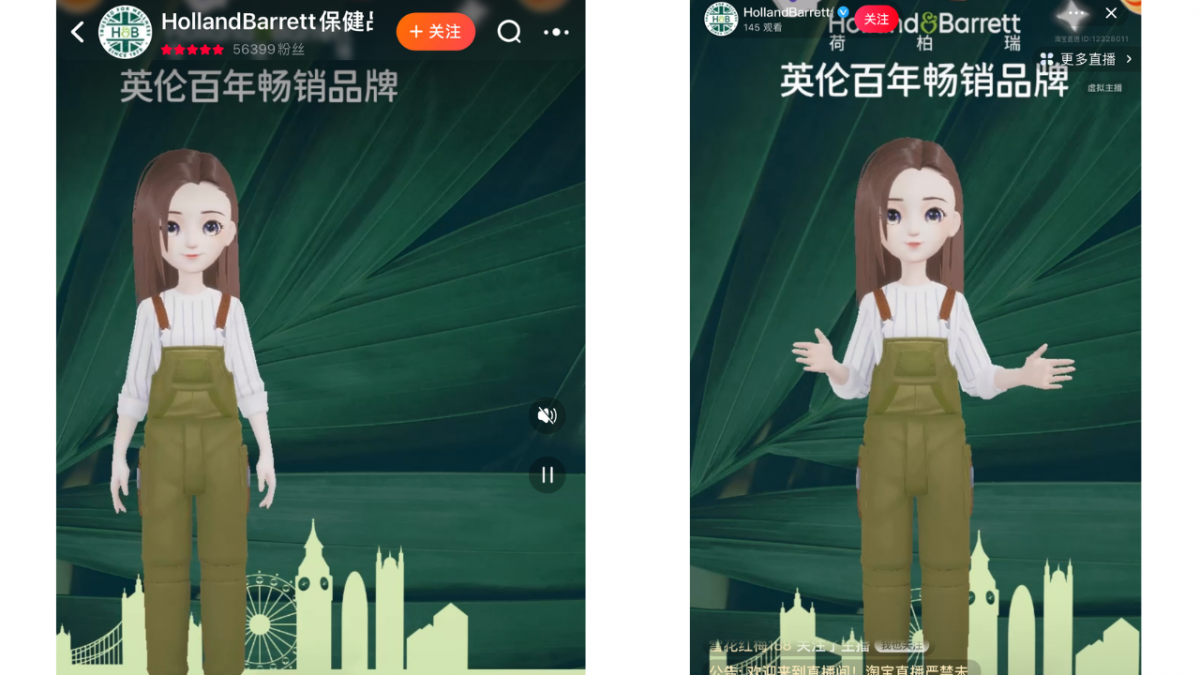Photo credit: Getty Images
A sales associate clad in green dungarees helps you pick a multi-vitamin – nothing out of the ordinary, except you’re in bed scrolling on your phone and the person helping you isn’t human.
Welcome to customer service in China in 2024.
China’s digital avatars come in various guises, from sign-language translators to TV actors to social media influencers.
On Alibaba Group’s e-commerce platform, Tmall, they wear the hat of a sales associate and can be summoned at a click to answer shoppers’ questions.
It’s a far cry from the chatbots that appear on the bottom right of your screen, regurgitating options menus while you smash keys trying to reach a human.
These highly customizable chatbots have a face – wide-eyed, rosy-cheeked and wearing overalls, in the case of multinational health and wellness company Holland & Barrett’s Tmall store.
“To be competitive on Tmall, a brand needs to be using the latest technology, and right now, that’s virtual avatars,” Joanna Zhou, China Commercial Manager at Holland & Barret, told Alizila. The company deployed this feature last year.

The avatar puts a traditional chatbot, which pulls data from a database of questions and answers, in the skin of an animation to engage and communicate with shoppers.
The global market for digital avatars will be worth over $682 billion by 2032 as it grows at a global compound annual growth rate of 47.1%, according to analysis by research company Vision Research Reports.
This growth is outpaced by the 51.3% rise expected in the Asia Pacific region over the same time frame, the research firm predicted.
In China, many retailers are paving the way. Some 12% of shoppers in the country reported interacting with a virtual customer service agent for complaints or product questions, compared with 10% worldwide, a 2023 study by consultancy PwC found.
Tag Team
AI-powered digital assistants and avatars do not necessarily replace real people; often they complement and enable live employees to serve consumers better.
On Holland & Barrett’s Tmall store, human livestreamers and their virtual counterparts run a daily relay race, passing insights and data from one side to power the other, according to Zhou.
For a couple of hours every day, the wellness company employs people to stream demos, share information about new products, and answer consumer queries.
“When there are real people livestreaming, they collect questions and see what consumers are asking, and then give that information to the bots,” she explained.
Chatbots take over the rest of the time, and many shoppers who visit the store during non-peak hours will be assisted by the Holland & Barrett avatar.
There are many perks to having a digital colleague. The virtual creation works around the clock, analyzing sales data and other online activities.
A Use-Case Buffet
The generative AI technology underpinning digital avatars is a veritable Swiss Army knife used across China’s e-commerce industry.
“The words avatar and AI make people sit up in their chairs. But in terms of actual implementation in the retail space, it’s really very broad,” said Zhou.
On Taobao, China’s largest digital retail platform, a generative AI-driven chatbot unveiled in September guides shoppers.
In its first four months, over 10 million people tried the feature, which suggests products and finds discounts.
“[Consumers] rely on different kinds of tools to help them justify their buying decision, so AI is therefore very influential in terms of consumer decision-making,” said Herbert Yum, a research manager at consultancy Euromonitor International, on an episode of Alicast.
At the same time, companies are poised to benefit.
“AI has emerged as a powerful catalyst, enabling businesses to amplify their strengths and minimizing hurdles such as language and cultural barriers,” Kaifu Zhang, Vice President of Alibaba International Digital Commerce Group, noted.
The company said in November it was piloting Aidge, its first artificial intelligence-powered suite of application programming interfaces.




